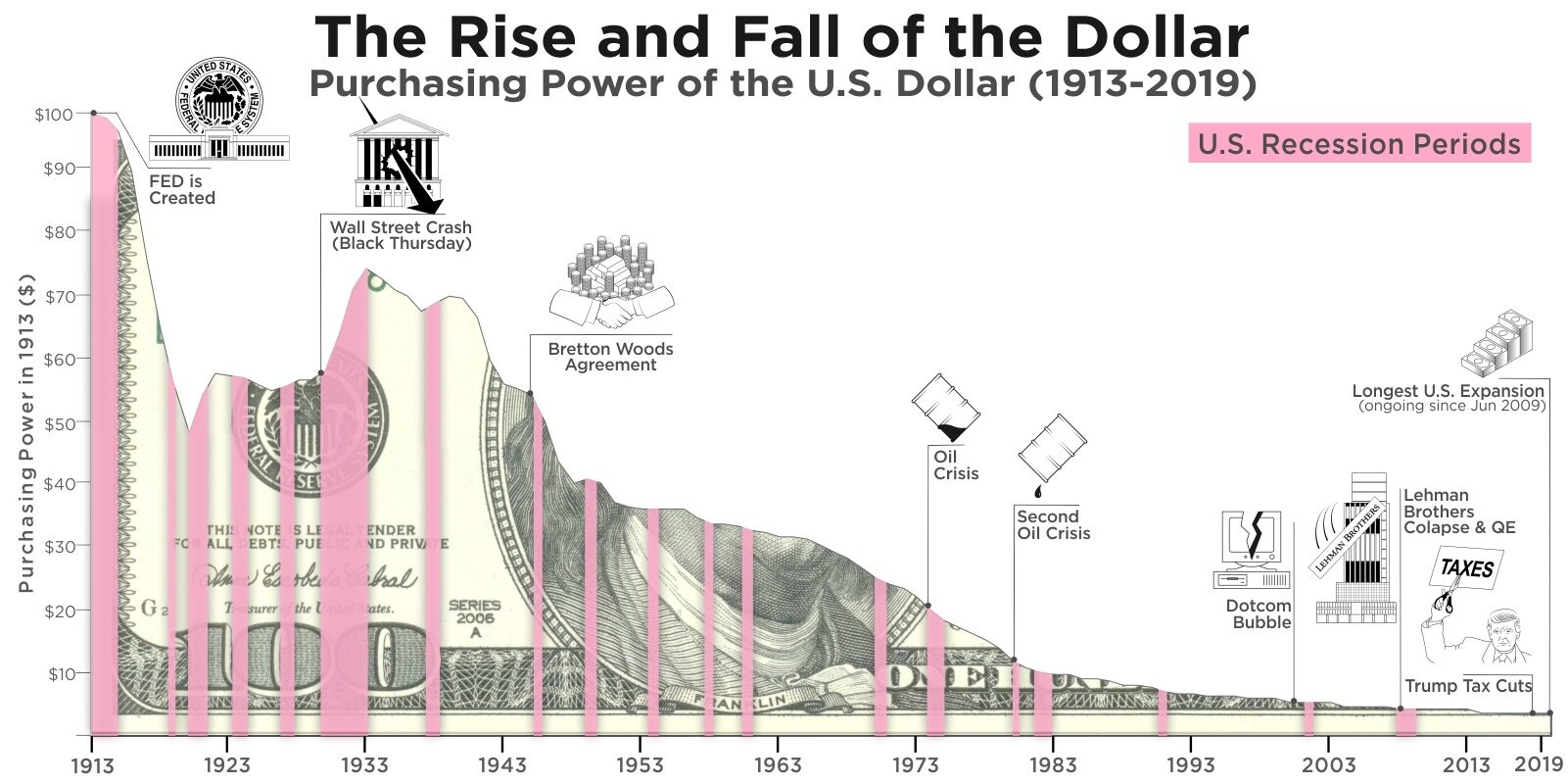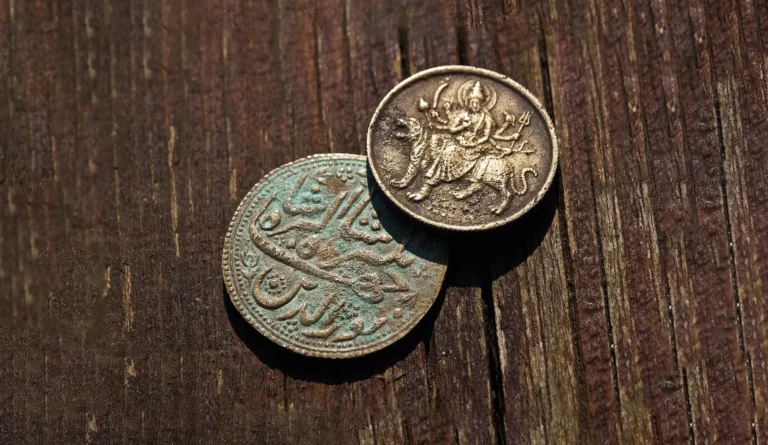What is money? The history of money goes back a long way and has been characterized by many new beginnings, each of which followed the failure of the previous currency. The structure of today’s reserve currencies has changed fundamentally once again, especially after 1971.
The following topics are covered in this knowledge article:
Table of Contents:
Currencies are an essential part of our daily lives and hold significant importance in the global economy. They enable the exchange of goods and services, the transfer of value, and serve as a means of saving. By being used as a common medium of exchange, currencies also facilitate trade between different countries and economies. In the international context, different currencies are represented by exchange rates, which determine the price at which one currency can be exchanged for another. Exchange rates are influenced by various factors, including political and economic stability, inflation, and a country’s or economic bloc’s trade balance.
Main characteristics of a currency
For a currency, or “our money,” to be sustainable, it must fulfill the following key criteria: It should serve as a medium of exchange, be suitable as a unit of account, and ensure value preservation. The latter criterion is historically essential for the longevity of a currency.
When value depreciation becomes evident, such as through excessive inflation, the currency loses the trust of its users, which can ultimately lead to a vicious cycle resulting in total loss of value. To delve deeper into this significant aspect, it’s worth taking a historical perspective, which will be covered later in this article.
Medium of exchange
Functions as a medium of exchange for goods and commodities.
Calculation unit
Represents mathematical basis for financial calculations.
Value retention
Shows a constant value over a longer period of time.
Origin and development of currencies
A glimpse into the past reveals that the first forms of money were created thousands of years ago, before the common era. Around 430 BCE, the concept of barter trade in the region that is now Greece began to evolve. The introduction of new exchange media in the form of equally weighted gold coins laid the foundation for more efficient trade.
This development not only established a basis for more efficient trade but also paved the way for simplified governance. Athens, the center of ancient Greece, became a powerful empire due to the introduction of gold coins, thereby laying the groundwork for Western civilization. However, as wars and other factors unfolded, the availability of gold for coinage became scarce, leading to a deficit. Rulers at the time decided to melt down collected taxes and mix them with copper to create more coins. This marked the inception of the first incremental devaluation through inflation. Coupled with a loss of public trust in the new currency, this combination inevitably contributed to hyperinflation and the collapse of the ancient Greek empire over time.
Even in the early stages of currency, the importance of user trust in its value stability became evident. Throughout history, newly established currencies have typically failed after around 50 years on average. Currency collapses occurred when user trust was no longer present. This history shows that currencies, as a means of storing savings, do not constitute a suitable instrument. But why?
Gold standard as critical element for preserving the value of currencies
We’ve learned that trust in the preservation of currency value diminishes when there’s no real value backing the medium of exchange. Athens’ money was doomed when the government began mixing pure gold coins with cheaper copper.
Jumping ahead in time, paper money was introduced to complement the traditional money in the form of coins. The value printed on a piece of paper was guaranteed by a respective government through its central bank. To bolster trust in paper currency, central banks backed outstanding currency with gold and other reserves, either fully or partially. A central bank controls the circulating money supply through the issuance of currency, and it can expand it through newly created money. When the outstanding money supply is disproportionately larger than a country’s economic output, debt, and reserves, the disparity leads to loss of purchasing power and inflation. Especially after the World Wars, numerous heavily indebted nations experienced hyperinflation, leading to the total loss of their respective currencies.
Towards the end of World War II, currency custodians from major industrialized countries recognized the issue of excessive currency devaluation and its destructive impact on the economy and prosperity. In 1944, their representatives gathered in Bretton Woods, New Hampshire, and established a new currency system that established the US dollar as the reserve currency and pegged other countries’ currencies to the US dollar. The US dollar, in turn, was tied to gold, which meant that any country holding US dollars could exchange them for gold. The promise of being able to exchange paper money for gold at any time renewed trust in the value of the dollar and other currencies tied to the Bretton Woods system.
INFO: Fiat money is a currency issued by state central banks with no intrinsic value, the acceptance of which is secured by public trust and the state order to accept it as legal tender.
Abandonment of the gold standard
Over the decades, it became increasingly challenging for governments to reconcile the demand for money with the available gold supply. More and more countries shifted to a system where governments regained autonomous control over the money supply and interest rates, rather than being restricted by the gold standard. Eventually, the standard, which had covered at least a portion of the cash circulation until the late 1970s, was gradually abolished. Fiat money, defined as an object without intrinsic value that serves as a medium of exchange, gained global prominence. Today, most countries utilize a purely fiscal or monetary system where the money supply is not directly tied to reserves. Fiat currencies exert significant influence on the global economy and play a crucial role in regulating and stabilizing the economy. Key fiat currencies include the US dollar, Euro, British pound, Japanese Yen, and Chinese Renminbi.
Purchasing power and inflation
The trust that users place in prevalent fiat currencies hinges on the monetary policies of respective central banks. Currency custodians’ mandate is essentially to ensure economic development through continuous price stability. When examining major currencies, the primary currencies in the modern era, a consistent loss of purchasing power is observed. With central banks and associated commercial banking systems able to create new money almost unchecked, currencies nowadays serve as a solution for various economic issues. Digitalization has also introduced the possibility of “money creation at the click of a button,” making money supply expansion more accessible. For instance, the leading currency, the US dollar, has lost 97% of its purchasing power since 1900.

But what does this mean exactly? Continuous inflation erodes the value of a currency. Goods and services, measured in the currency, become increasingly expensive. This is particularly evident in historical price comparisons. In its new form, our currencies have limited suitability as long-term stores of value.

If a regime goes to extremes by printing money uncontrollably to pay off debts or stimulate its economy, hyperinflation can result. The consequences are devastating, eroding trust in the currency and the financial system, causing people to lose their savings. Whether it’s Germany in the late 1920s, Zimbabwe, the Weimar Republic, Hungary, or Turkey, rapid currency devaluation regularly marks the history of fiat currencies. Meanwhile, central banks universally cite positive inflation targets. This comes at the expense of the purchasing power and value-retaining properties of fiat money.
- Increased demand for goods and services
- Increased salary levels (wage/price spiral)
- Rising raw material costs
- Expansion of the money supply
- Reduced productivity
- Decreasing demand for goods and services
- Decreasing salary levels
- Excess supply of goods and services
- Lower cost of raw materials
- Stagnating or shrinking economy
Expansion of the money supply as a universal remedy
Central banks, also known as central banks, control money supply growth through various monetary policy instruments. While nearly every nation has a central bank, the American Federal Reserve Bank (Fed) and the European Central Bank (ECB) are among the most influential. They have a significant impact on the global economy and financial markets, as they set monetary policy, regulate the money supply, and engage in international financial markets.
One of the most critical tools is the benchmark interest rate set by a central bank. It reflects the interest rate banks must pay for short-term loans or the interest they receive for deposits. In principle, a higher benchmark interest rate leads to reduced money supply growth, as borrowing money becomes more expensive for banks. Conversely, a lower benchmark interest rate increases money supply growth, as borrowing money becomes cheaper for banks. Commercial banks, in turn, play a vital role in transmitting monetary policy to the economy. They are the ones lending money to businesses and consumers, thus putting money into circulation.

After the global financial crisis in 2008, the Federal Reserve and the ECB implemented other measures to control money supply growth. The largest central banks initiated more extensive measures under the umbrella term “quantitative easing” (QE), leading to significant money supply expansion over the coming years. In this context, central banks purchase securities, typically government bonds or other debt securities, from banks. This increases the money supply and lowers interest rates, aiming to stimulate lending and economic activity.
Minimum reserve system as a catalyst of monetary supply
It’s important to understand that economic growth in G20 nations increasingly relies on debt-based expansion. To better comprehend our current financial system and the growth built on debt, it’s worthwhile to explore the topic of the minimum reserve banking system (Fractional Reserve Banking System). The minimum reserve banking system is a currency system in which banks are required to hold only a portion of bank balances as readily available reserves. This allows a bank to increase the money supply by lending more money in the form of loans than the savings deposited.
Control over money supply growth through various central bank instruments is a delicate balance due to its complexity. Rapid money supply growth can lead to inflation, while slow expansion can hinder the economy and slow down growth.
New forms of currency
In the era of digitalization, new forms of currency have emerged under the term “cryptocurrencies.” Cryptocurrencies are digital currencies based on blockchain technology and cryptography, ensuring secure and immutable transactions. Cryptocurrencies are decentralized, meaning there’s no central authority, such as a central bank, that controls or issues them. The protocol of a cryptocurrency governs the rules and functionality. The protocol is marked by the phrase “Code is Law,” implying that the protocol is the law and cannot be changed by any central authority. Changes can only occur through consensus among participants in the network. The most well-known cryptocurrency, Bitcoin, was introduced in 2009 and has since spawned a variety of imitators. Cryptocurrencies have evolved rapidly in recent years, with increased usage and acceptance. Their regulation and integration into the traditional financial sector remain partially uncertain.
Stablecoins and CBDCs
Stablecoins are cryptocurrencies pegged to a stable value, such as a fiat currency or an asset. The goal of stablecoins is to reduce the volatility typically associated with cryptocurrencies while leveraging the benefits of blockchain technology. The significance of stablecoins in today’s economic landscape has increased, as they represent a stable alternative for cross-border value transfer.
Central bank digital currencies (CBDCs) are a natural progression in the ongoing digitization of value. Many central banks are exploring the introduction of a digital version of their currency. China is at the forefront, having already partially introduced the digital Yuan. The US Federal Reserve and the ECB have been researching CBDC projects for some time. With a digital currency version, the sphere of influence of central banks expands exponentially. This offers new horizons in fiscal policy and money flow monitoring. However, these new possibilities have also raised concerns, with critics expressing worries about privacy. Former CIA employee Edward Snowden, for example, shed light on the control mechanisms that CBDCs can be equipped with.
Summary
- The history of money began several millennia ago, when people engaged in barter to meet their needs. Initially, items like animals, grains, or gems were used as currency. Over time, the concept of coinage emerged, with metal coins serving as currency. In the 19th century, banknotes emerged as an alternative to coins, and today, most money exists as electronic data in bank accounts. Modern monetary policy is primarily controlled by central banks, which regulate the money supply process.
- The main properties of a currency include acceptance, stability, availability, and measurability. The long-term acceptance of a currency is particularly dependent on its value preservation. Excessive inflation leads to a devaluation process that can ultimately result in a total currency collapse. This phenomenon has occurred numerous times in history.
- In the history of money, the abandonment of the gold standard in the 20th century had a profound impact, enabling governments and central banks to exert greater control over the money supply and economic policy. It marked the beginning of the fiat era, transitioning from a currency tied to a fixed value to one whose value is based on trust in the government's or central bank's creditworthiness.
- The world economy is now dominated by major fiat currencies, playing a crucial role in facilitating trade and capital flow between nations and serving as indicators of a country's economic performance. Central banks can regulate and influence a currency's money supply by adjusting their benchmark interest rates, which in turn affect the credit market and inflation. Additional tools for controlling the money supply, such as quantitative easing programs, are increasingly employed by central banks and also impact currency value.
- Following the 2008 financial crisis, many central banks expanded their tools to revive the economy. This included massive bond purchases and the use of QE programs, leading to significant money supply expansion. These measures have resulted in not only inflation but also increased risks and more complex challenges for the financial system.
- The minimum reserve system also has a significant impact on money supply expansion. It determines how much money banks must hold at the central bank as reserves to cover their liabilities and lending.
- With digitization and advancing technology, new financial instruments and technologies play a larger role in monetary policy. Digital alternatives in the form of cryptocurrencies and CBDCs have the potential to revolutionize the existing financial system. The mass adoption of digital currencies ultimately depends on factors such as trust, acceptance, regulation, and technological development.




